Other names Bully Hayes | Name Bully Hayes | |
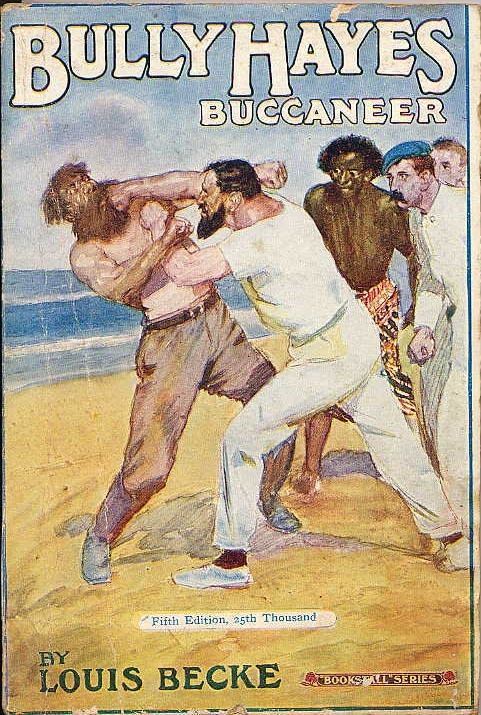 | ||
Occupation Ship's captain, trader and blackbirder Died March 31, 1877, Kosrae, Federated States of Micronesia | ||
Bully Hayes
William Henry "Bully" Hayes (1827 or 1829 – 31 March 1877) was a notorious American-born ship's captain who engaged in blackbirding in the 1860s and 1870s.
Contents
- Bully Hayes
- Early career
- Australia
- New Zealand
- Blackbirding on the Rona
- Louis Becke and the wreck of the Leonora
- The final voyage on the Lotus
- Death
- Legend of Bully Hayes
- Popular culture
- References
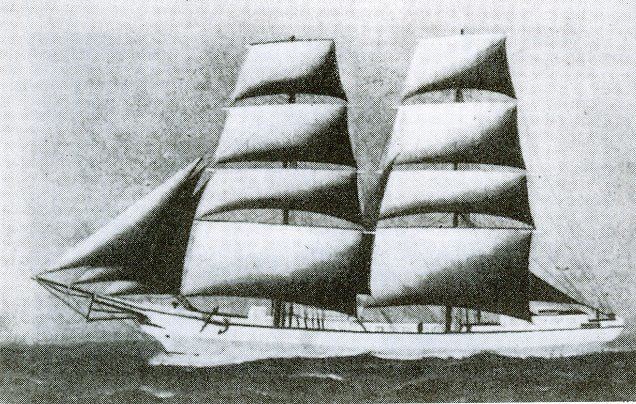
Hayes operated across the breadth of the Pacific in the 1850s until his murder on 31 March 1877. Hayes has been described as a South Sea pirate and "The Last of the Buccaneers". However James A. Michener and A. Grove Day, in their account of his life, warn that it is almost impossible to separate fact from legend in his life; they described Hayes as "a cheap swindler, a bully, a minor confidence man, a thief, a ready bigamist" and commented that there is no evidence that Hayes ever took a ship by force in the tradition of a pirate or privateer.
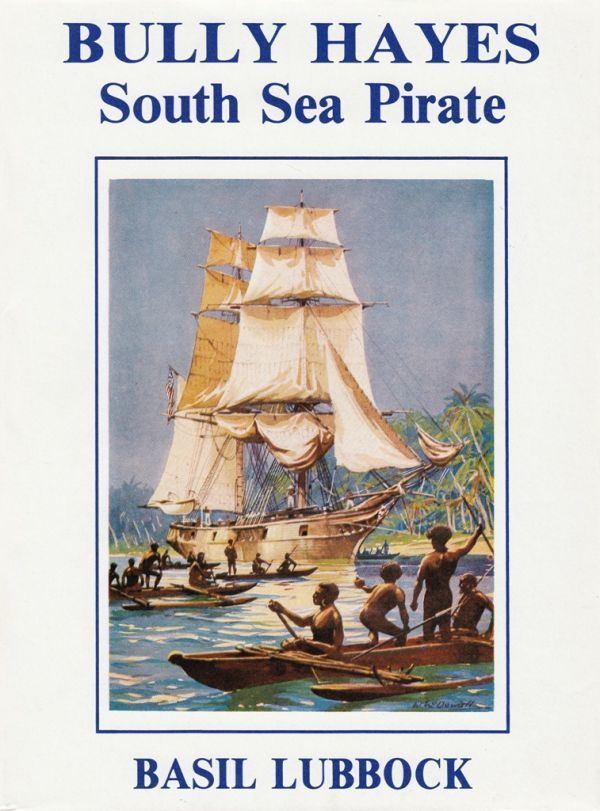
He was a large man who used intimidation against his crew, although he could be very charming if he chose to be.
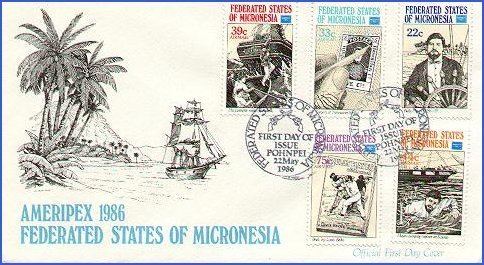
Early career
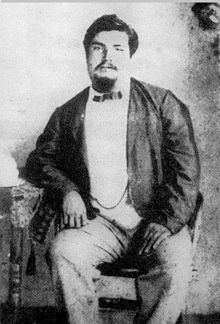
He was born in Cleveland, Ohio, one of three sons of Henry Hayes, a grog-shanty keeper. Hayes became a sailor on the Great Lakes after running away from home. He is believed to have left New York as a passenger of the Canton on 4 March 1853, although when the ship reached Singapore on 11 July 1853 it was captained by Hayes, and sold by him there shortly after arrival. Hayes operated in East Asia, carrying out various frauds on ship's chandlers over mortgaging ships, providing forged papers in payment for cargo and selling cargo for his own account rather than for the account of the owners of the cargo.
Australia
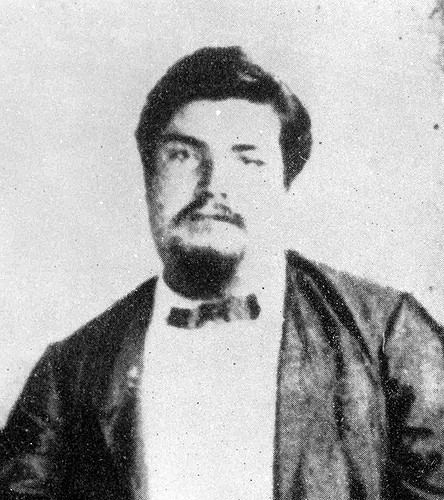
Hayes arrived in Fremantle, Western Australia in January 1857 as captain of the C. W. Bradley, Jr. (which was the Canton, repurchased and renamed). The Bradley had excellent cabin accommodation, and made two trips to Adelaide; in March and June 1857 with passengers. The South Australian authorities were not pleased as many of these migrants were convicts with conditional pardons. The Singapore ships chandlers caught up with Hayes in Perth, Australia and forced the sale of his ship, bankrupting him. The Bradley was sold in Adelaide on 22 July and was later renamed Federation.

Hayes married the widow Amelia Littleton in the Clare Valley town of Penwortham on 20 August 1857, bigamously if, as is believed, Hayes had earlier married in the United States.
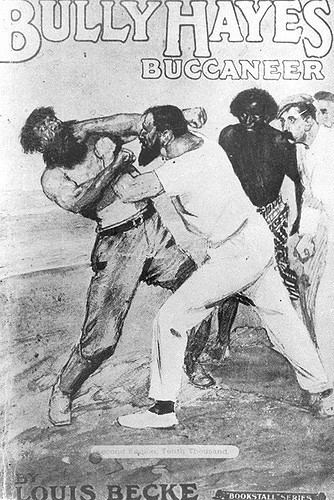
Hayes had built up debts in Adelaide, but by a ruse escaped his creditors and in Melbourne, Australia he gained the command of the Orestes sailing to Vancouver, British Columbia, Canada. Hayes was thrown off the ship in Honolulu by the supercargo for swindling passengers. He proceeded to gain command of a new ship, the 318-ton brig Ellenita with a cargo obtained by fraud. Hayes sailed back across the Pacific, abandoning Amelia in San Francisco. Another version has her falling from the Orestes in 1858 and drowning. On the return trip to Sydney, Hayes lost the Ellenita off Navigator Islands on 16 October 1859 and with the women and children and a skeleton crew reached Savai'i to raise the alarm. After considerable difficulties, the remaining passengers and crew were returned to Sydney by H.M. brig Elk. There Hayes evaded a charge of having indecently assaulted one of the passengers, Miss Cornelia Murray, aged 15.
While Hayes lost the Ellenita in a storm, and others to creditors, he always found new ships to command and new cargoes to fraudulently acquire and sell. Between maritime adventures Hayes became a member of a blackface minstrel troupe in New South Wales, Australia.
New Zealand
Hayes was a notable early figure in the history of the Otago region of New Zealand. After facing bankruptcy in Australia in the late 1850s, he sailed to Otago in 1862 (at the time the region was the center of a gold rush). He travelled the region with a travelling company of vaudeville artists on a tour of New Zealand. In January 1863 they arrived at Arrowtown. Hayes married a widow Mrs Roma 'Rosie' Buckingham, whose four sons were vaudeville artists, performing as The Masters Buckingham. Hayes and Roma settled in Arrowtown where he opened a hotel, the "United States", later called "The Prince of Wales".
Hayes had a falling out with the Buckingham family who offered any barber £5 to cut his hair off short. Eventually this happened and it was revealed, as rumoured, that Hayes had been deprived of an ear in California where he had been caught cheating at cards. After this he was mocked in a popular play, and with his reputation gone he and his wife left for Port Chalmers. Later he acquired a ship in Australia, the Black Diamond which he hid in Croixelles Harbour, near Nelson. On 19 August 1864, while travelling in a borrowed yacht, the familay was caught by a sudden squall and Rosie, her baby, her brother, and a nurse all drowned. Only Hayes survived.
He moved to Christchurch, where he married Emily Mary Butler in 1865.
Blackbirding on the Rona
In May 1866 Hayes acquired the brig Rona and operated in the Pacific with bases in Apia, Samoa, and in Mili Atoll in the Marshall Islands. Hayes became notorious in the Pacific because of his recruiting of Pacific islanders to provide labour for the plantations of Tahiti, Fiji, Samoa and Australia. While there was some voluntary recruitment of Pacific islanders, the activity predominantly involved kidnapping, coercion and tricks to entice islanders onto ships, on which they were held prisoner until delivered to their destination.
Hayes made money and purchased the brigantine Samoa. By coincidence Hayes lost both ships off Manihiki, Cook Islands in March 1869. Hayes then purchased the schooner Atlantic, although soon after he was arrested in February 1870 by the Consul Williams in Apia on charges related to his activities. Hayes escaped from Samoa on 1 April 1870 on the ship of Ben Pease, a fellow American of similar reputation.
There are differing accounts of the adventures of Hayes and Pease. That of James A. Michener and A. Grove Day Hayes is different in detail to that provided by Alfred Restieaux, an island trader who had dealings with both Hayes and Pease. What is consistent between the accounts is that Hayes and Pease proceeded on a trading cruise in the Caroline Islands and the Marshall Islands in the 250-ton brig Pioneer. According to Restieaux, Hayes and Pease argued over the ownership of the cargo; Hayes claimed the cargo was his and that Pease was merely carrying it as freight, while Pease claimed a half share in the cargo. Restieaux's account is that Hayes sold the cargo in Shanghai; with Restieaux recounting two stories that he had been told about Pease's death: the first was that he drowned after jumping overboard from a Spanish Man-of-War, the second was that he was killed in a fight in the Bonin Islands.
In any event when the Pioneer arrived back in Apia Hayes was in sole command with his explanation for this change in command being that Ben Pease had sold the ship to Hayes and had retired to China – an explanation that many doubted but would not or could not challenge.
Hayes renamed the ship the Leonora, (the name of his favourite daughter), painting her white in an effort to change her reputation. Hayes continued to trade in coconut oil, copra and blackbirding. Hayes was arrested by Captain Richard Meade of the Narragansett (1859) on 19 February 1872 but was released as Meade could not find witnesses or sufficient proof. Hayes's reputation meant that no crew members would give evidence against him.
Louis Becke and the wreck of the Leonora
In 1874, 19-year old Australian Louis Becke sailed a ketch, the E.A. Williams from Apia, Samoa to Mili Atoll to deliver it to Hayes. Becke then joined the Leonora, as a passenger until it was wrecked on 15 March 1874 during a storm while in Lele harbour at Kosrae. at what is now the Utwe-Walong Marine Park on Kosrae,
After the wreck Hayes brawled with the European traders on Kosrae and with his crew, with the islanders being subject to seven months of oppression and violence. Becke chose to stay with the islanders in the village of Leassé. In September of that year Rosario (1860) under Captain Dupuis arrived and Hayes was arrested, but escaped by a 14-foot boat built of timber from the wreck of the Leonora.
Becke later became an author, and wrote a number of stories of the exploits of Bully Hayes.
The final voyage on the Lotus
Hayes reached Guam. He purchased the schooner Arabia on credit in April 1875 and accepted a commission to help convicts escape from prison. He was arrested and ended up in prison in Manila, Philippines - at the time a colony of Spain. Hayes was eventually freed and landed in San Francisco without funds in early 1876. He persuaded a Mr and Mrs Moody, to fund the purchase of a schooner the Lotus. Hayes tricked Mr Moody into going ashore and sailed off with Mrs Moody still on board. After arriving in Apia, Samoa, on 2 January 1877 the Lotus sailed to Kosrae, the atoll on which Leonora was wrecked, where Hayes intended to collect coconuts left at the time of the wreck.
Death
The commonly accepted version of the death of Hayes is that provided by Charles Elson, the mate of the Lotus, was that when leaving Kosrae on 31 March 1877, the ship's cook Peter Radeck, "Dutch Pete", responding to threats from Hayes, killed him. While the events are unclear, it is understood that Hayes was shot with a revolver, struck on the skull with an iron implement and thrown overboard. Charles Elson and the remaining crew sailed the Lotus to Jaluit in the Marshall Islands and gave an account of the death of Bully Hayes. No one was concerned at his death – indeed Peter Radeck was treated as a hero.
Becke's interpretation of the events was that Charles Elson plotted with the other crew members to murder Hayes. The motive was remove Hayes and allow Elson and the crew to search for and take the money that Hayes was believed to have buried on at Kosrae following the wreck of the Leonora in 1874. The existence of this buried money is part of the myth that surrounds Hayes.
Legend of Bully Hayes
Bully Hayes may not have ever taken a ship by force in the tradition of a pirate or privateer, acts of fraud having been his preferred means of gaining command of a ship, however if the suspicion that he disposed of Ben Pease to gain command of the Pioneer is true then he may well have been a murderer.
Much of his legend is due to the writing of Louis Becke, who used his time with Hayes in his Pacific stories:
In some he tells stories of Hayes that are based on first-hand experience, but there may be some fictional elements.
